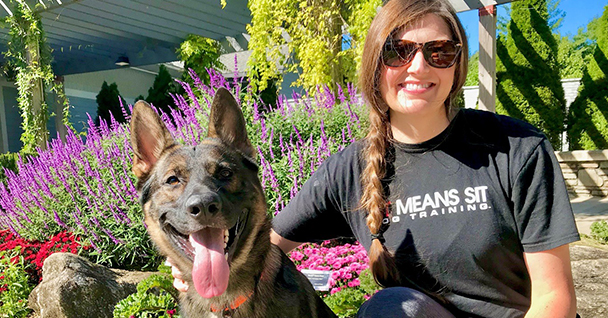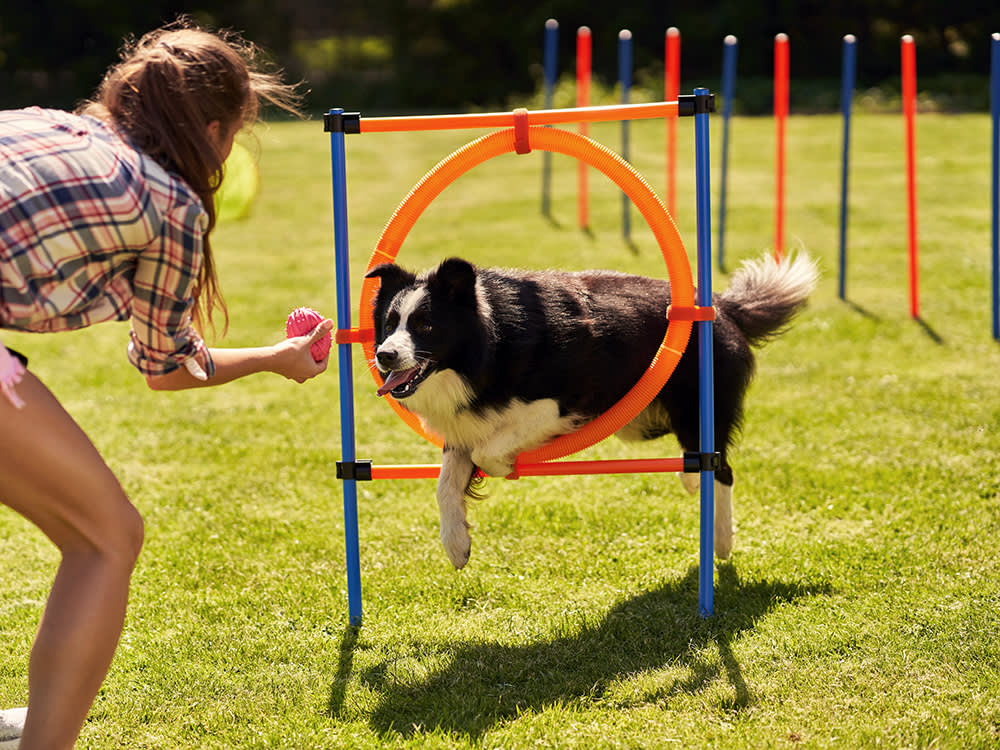Essential Tips for Successful Dog Training: An Overview for Pet Dog Owners
Efficient pet dog training is a multifaceted procedure that calls for a critical method tailored to both the family pet's personality and the owner's objectives. Recognizing just how to navigate these obstacles can substantially boost the training experience, eventually changing the relationship in between proprietor and pet.
Comprehending Dog Behavior
Understanding pet dog actions is vital for reliable training and fostering an unified partnership between dogs and their owners. dog training. Canines communicate mostly via body language, articulations, and actions, making it critical for owners to interpret these signals properly.

Socializing plays a considerable function in pet dog actions; exposure to various environments, individuals, and other pets can significantly affect a pet dog's character. Additionally, aspects such as breed features and private personality ought to guide training approaches, as some breeds might have details behavior qualities that require customized methods. By understanding these aspects, owners can produce an encouraging setting that motivates favorable behavior, leading to effective training end results and a deeper bond with their pets.
Establishing Constant Commands
Efficient interaction with your dog begins with developing consistent commands. This foundational element of training is critical for fostering understanding between you and your pet. Uniformity in the commands you use makes sure that your pet dog can accurately link certain words or expressions with the desired behaviors.
When picking commands, select clear, unique words that are simple to differentiate and state from one an additional. Prevent using similar-sounding commands that might perplex your canine. For instance, utilizing "sit" and "remain" is proper, but "sit" and "hit" can cause misconceptions.
Furthermore, keep the very same tone and volume for each and every command. Dogs are sensitive to vocal hints, so varying your tone can create confusion.
It is equally essential to make certain that all member of the family get on the exact same page pertaining to the commands made use of. A united front in command use will stop combined signals and reinforce the knowing process.
Favorable Support Methods
The power of positive reinforcement in canine training exists in its capacity to encourage preferred actions with incentives and appreciation. This method is grounded in the principle that actions adhered to by beneficial end results are most likely to be repeated. By integrating positive support into your training routine, you can effectively shape your pet dog's habits in a useful way.
To execute favorable support, it's vital to identify what encourages your canine, whether it be treats, playthings, or spoken appreciation. When your pet dog does a desired activity, such as sitting on command, instantly reward them with a treat or love. This organization between the command and click this site the favorable end result reinforces their understanding.
It's important to timing the incentives correctly; providing the reinforcement within seconds of the wanted actions aids your canine make the connection (dog training). Additionally, consistency is vital-- ensure that all relative utilize the exact same commands and incentive systems to avoid complication

Progressively, you can decrease the frequency of treats as your canine finds out the behavior, transitioning to commend or periodic incentives. This approach not only fosters a solid bond in between you and your pet but also promotes a positive understanding atmosphere, making educating an enjoyable experience for both.
Socialization and Communication
Continually subjecting your pet to a selection of environments, people, and various other animals is critical for their social advancement. Socialization must begin early, ideally throughout the important home window of official website 3 to 14 weeks, when puppies are most responsive to new experiences. Nonetheless, older dogs can likewise profit from recurring socialization initiatives.
Introduce your canine to different settings, such as parks, pet-friendly stores, and city areas. This direct exposure helps them adapt to various stimulations, lowering anxiousness and worry responses. Motivate positive interactions with other pet dogs and people, making certain that these encounters are secure and controlled to foster confidence.
Make use of structured playdates with well-mannered pet dogs, as this can boost your canine's social abilities and instruct them ideal actions. Obedience courses and training sessions also offer superb opportunities for socialization, allowing your pet dog to communicate with others in a monitored setting.
Display your pet's body movement during communications, as this will certainly aid you evaluate their comfort degree. Gradually boost exposure to even more difficult scenarios while guaranteeing that each experience declares. A well-socialized pet is most likely to display well balanced habits, making them a happiness to have in any kind of setting.
Resolving Typical Training Challenges
Every pet dog owner will certainly run into training challenges eventually, despite their pet dog's age or socializing degree. Identifying typical problems such as stubbornness, disturbances, and fearfulness can aid in developing efficient techniques for renovation.

Diversions during training sessions can thwart emphasis. To battle this, begin training in a peaceful atmosphere with marginal stimulations. Gradually present disturbances as the dog ends up being more skillful in commands. Short, regular training sessions are also reliable in keeping focus.
Terror can prevent a pet's understanding process. Progressive desensitization to the source of anxiety, paired with favorable reinforcement, can aid relieve anxiety. Patience is important; never compel a pet right into a circumstance that creates distress, as this may exacerbate the issue.
Eventually, understanding and attending to these typical difficulties with a structured technique will cultivate an extra efficient training experience, strengthening the bond between canine and owner while advertising effective knowing.
Verdict
In recap, successful dog training depends on a thorough understanding of canine actions, the facility of regular commands, and the application of favorable reinforcement methods. Socialization plays an essential duty in establishing well-adjusted animals, while resolving common training obstacles calls for perseverance and versatility. By applying these crucial approaches, pet dog proprietors can cultivate a solid bond with their pets and advertise desirable actions, inevitably causing a harmonious connection between humans and their canine buddies.
Comprehending pet dog actions is crucial for effective training and fostering an unified relationship in between canines and their owners.Socialization plays a significant role in dog actions; direct exposure to numerous atmospheres, people, and various other animals can substantially impact a dog's temperament.The power of positive support in dog training lies in its capacity to motivate desired habits with rewards and appreciation. By including favorable reinforcement right into your training routine, you can effectively form your canine's actions in a positive manner.
In summary, successful canine training relies on a comprehensive understanding of canine behavior, the facility of constant commands, and the application of positive reinforcement techniques.
Comments on “Usual Behavioral Issues and Their Solutions in Dog Training”